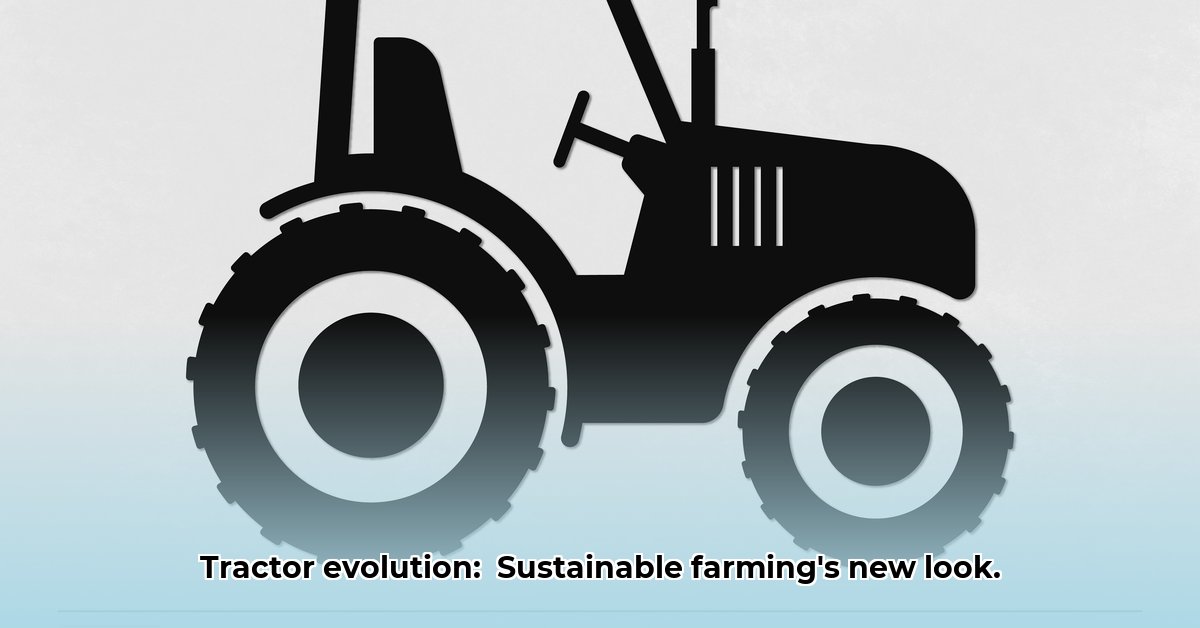
That iconic image—a lone tractor silhouetted against a vibrant sunset—is instantly recognizable. It conjures images of idyllic rural landscapes and hardworking farmers, a seemingly timeless tradition. But does this romanticized view accurately reflect the dynamic world of modern sustainable agriculture? The answer, unfortunately, is no. This seemingly simple image obscures the complexity and innovation driving today's food systems. For more on different tractor types, see tractor types here.
Beyond the Sunset: Unveiling the Limitations of a Classic Image
The ubiquitous tractor silhouette—appearing in stock photos, advertisements, and even on cereal boxes—presents a deceptively simplistic narrative. It suggests a solitary farmer toiling the land, a picture of rustic charm and enduring agricultural practice. However, this idyllic portrayal significantly undersells the reality of modern sustainable farming. Where, for example, is the cutting-edge technology? This image fails to capture the GPS-guided tractors, the precision-mapping drones, and the sophisticated data analysis that are transforming agricultural practices.
Furthermore, the typical image often features a single, typically white, male farmer. This starkly contrasts with the reality of a diverse and collaborative industry. The picture overlooks the significant contributions of farmworkers, researchers, engineers, and policymakers, all integral to sustainable agricultural practices. This singular, homogenous portrayal ignores the vibrant tapestry of individuals driving change within the sector. Isn't it time we updated this outdated picture?
Reframing Sustainable Agriculture: A More Realistic Depiction
To accurately represent sustainable agriculture, we need a visual overhaul. We require images that reflect the current realities—the innovative technologies, the diverse workforce, and the interconnectedness of modern farming systems. Consider the rise of vertical farms, hydroponic systems, and solar-powered irrigation—all critical components of modern sustainable agriculture—that are noticeably absent from the traditional tractor silhouette.
Precision agriculture, for instance, utilizes sensors, GPS, and data analytics to optimize every aspect of farming, from planting to harvesting. Imagine a photograph depicting a farmer using a tablet to monitor soil moisture levels in real-time, adjusting irrigation accordingly. This image far more accurately reflects modern sustainable practices than the singular, sunset-backed tractor. Similarly, the use of drones, for crop surveying, identifying problem areas, and targeted pesticide application, offers another compelling visual narrative of modern sustainable farming.
A Call to Action: Reimagining the Visual Narrative
This isn't merely a matter of aesthetics; it's about creating a more accurate portrayal of sustainable agriculture. The current imagery presents a misleading narrative, potentially hindering both progress and public support. We need a concerted effort to shift the visual landscape.
Revolutionizing Stock Photography: We must commission new photographs and videos that authentically represent the techniques and diversity within modern sustainable agriculture. These images must move beyond tired clichés, showcasing the range of technologies and the individuals integral to its success.
Leadership from Agricultural Organizations: Agricultural organizations and industry leaders must actively champion this shift by investing in campaigns that promote more inclusive and realistic visuals. This necessitates funding for the creation of high-quality images and videos that reflect the contemporary reality.
Education and Outreach: Educators hold a vital role in integrating diverse and accurate resources into teaching materials, challenging outdated stereotypes, and promoting a deeper understanding of modern agricultural practices. Students must see real-world applications of sustainable farming, not simply an idealized image.
Consumer Demand for Authenticity: Consumers wield considerable influence. We should actively seek out and support businesses that utilize accurate and inclusive imagery in their marketing. The demand for truthful representation will create market incentives for change.
The Evolution of Imagery: A Comparison
| Image Type | Strengths | Weaknesses |
|---|---|---|
| Traditional Tractor Silhouette | Simple, evocative, nostalgic | Oversimplified, lacks diversity, outdated technology |
| Modern Sustainable Farming Imagery | Accurate, diverse representation, shows innovation | Might require more context to fully understand |
The goal is not to entirely discard the romantic image; it holds sentimental value for many. However, we must augment it with a more comprehensive narrative—one that includes the innovative technologies and the diverse individuals driving sustainable agriculture forward. The future of our food systems depends on a more accurate and inclusive visual representation.